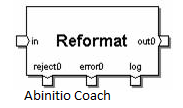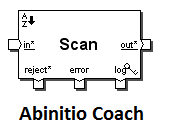The Abinitio Component organizer provides several partitioning components that divide data in different ways.Those are listed below
1.Function Partition
2.Hash Partition
3.Load Level partition
4.Percentage partition
5.Range Partition
6.Roundrobin partition
1.Function Partition Dividing it according to a DML expression.
2.Hash Partition Grouping it by a key,like dealing cards into piles according to their suit.
3.Load Level partition Dynamic load balancing.more data goes to CPUs that are less busy and vice versa,thus maximizing through put.
4.Percentage partition Distributing it,So out put is proportional to functions of 100.
5.Range Partition Dividing it evenly among nodes,based on key and a set of partitioning range.
6.Roundrobin partition Distributing it evenly,in blocksize chunks,across the output partitions.
1.Function Partition
2.Hash Partition
3.Load Level partition
4.Percentage partition
5.Range Partition
6.Roundrobin partition
1.Function Partition Dividing it according to a DML expression.
2.Hash Partition Grouping it by a key,like dealing cards into piles according to their suit.
3.Load Level partition Dynamic load balancing.more data goes to CPUs that are less busy and vice versa,thus maximizing through put.
4.Percentage partition Distributing it,So out put is proportional to functions of 100.
5.Range Partition Dividing it evenly among nodes,based on key and a set of partitioning range.
6.Roundrobin partition Distributing it evenly,in blocksize chunks,across the output partitions.





















